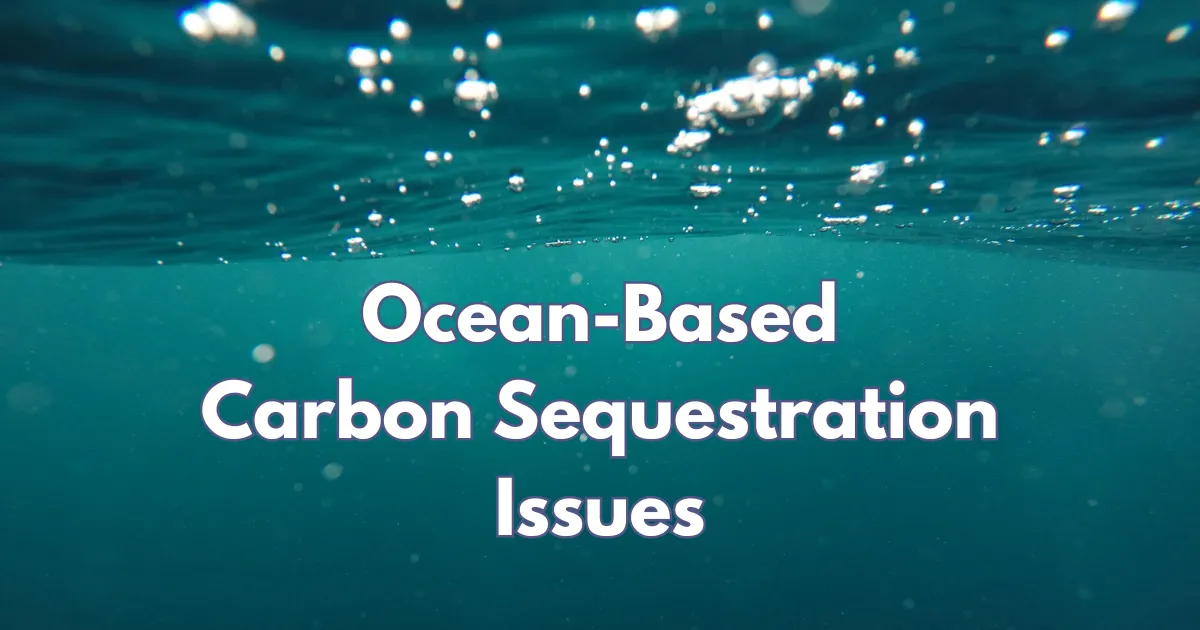A Comparative Analysis with Dynamic’s Biochar Solution
As the urgency to combat climate change grows, various methods of carbon sequestration have been proposed and explored. Among these, ocean-based carbon sequestration has garnered significant attention due to the ocean’s vast capacity to absorb and store carbon dioxide (CO2). The ocean covers 70% of the Earth’s surface and already buffers a large portion of the CO2 emissions. However, despite its theoretical potential, ocean-based carbon sequestration is fraught with ecological, economic, and logistical challenges. Let’s look at these issues and compare them with the benefits of Dynamic’s biochar-based carbon sequestration method.
What is Ocean-based Carbon Sequestration?
Ocean-based carbon sequestration involves strategies to enhance the ocean’s natural ability to absorb and store CO2 from the atmosphere. The primary methods include:
- Ocean Fertilization: Adding nutrients like iron to ocean waters to stimulate the growth of phytoplankton, which absorbs CO2 during biosynthesis. When these organisms die, they theoretically sink to the ocean floor, sequestering the carbon.
- Alkalinity Enhancement: Adding substances like limestone or olivine to the ocean to increase its alkalinity. This process can enhance the ocean’s capacity to absorb and store CO2 by converting it into bicarbonate, which is more stable.
- Artificial Upwelling: Pumping nutrient-rich deep water to the surface to stimulate phytoplankton growth, similar to ocean fertilization.
- Direct Injection of CO2: Capturing CO2 from industrial sources and injecting it deep into the ocean for long-term storage.

Key Issues with Ocean-based Carbon Sequestration
While these methods sound promising, they come with significant drawbacks:
1. Ecological Risks
Ocean-based carbon sequestration can have unintended consequences for marine ecosystems. For instance, ocean fertilization can lead to algal blooms, which might produce harmful toxins that affect marine life and human health. These blooms can also result in oxygen-depleted zones, or “dead zones,” where marine life struggles to survive due to a lack of oxygen. The University of Michigan published an article in 2008 detailing “dead zones” in the Gulf of Mexico and Chesapeake Bay.
Moreover, increasing ocean alkalinity or directly injecting CO2 can alter the delicate chemical balance of ocean waters, potentially harming marine organisms, particularly those that rely on calcium carbonate for their shells and skeletons, such as corals and shellfish. The long-term ecological impacts of these interventions are still poorly understood, making them a risky gamble for large-scale deployment.
2. Cost and Logistical Challenges
Implementing ocean-based carbon sequestration on a meaningful scale is highly expensive and logistically complex. Ocean fertilization, for instance, requires vast amounts of nutrients to be distributed over large ocean areas, with the outcomes often uncertain and difficult to monitor. Alkalinity enhancement involves mining, transporting, and dispersing large quantities of minerals, which is not only costly but also energy-intensive, potentially offsetting some of the carbon savings.
The direct injection of CO2 into the deep ocean is another costly endeavor, requiring specialized infrastructure and vessels to capture, transport, and inject CO2 at depths where it is expected to remain sequestered for long periods. However, the risk of CO2 eventually leaking back into the atmosphere remains, alongside the unknown impacts on deep-sea ecosystems.
3. Ethical and Legal Concerns
There are significant ethical and legal challenges associated with manipulating the ocean’s natural processes. Many scientists and environmentalists argue that the ocean should not be used as a dumping ground for excess CO2, as the long-term consequences are unpredictable and potentially irreversible. Additionally, international laws governing the high seas are complex, and the legality of large-scale ocean fertilization or CO2 injection projects remains a contentious issue.
Dynamic’s Biochar Solution: A Superior Alternative
Compared to ocean-based carbon sequestration, Dynamic’s biochar-based approach offers a more reliable, sustainable, and cost-effective solution for carbon sequestration.
1. Permanent and Secure Carbon Storage
Biochar is a form of stable carbon created by pyrolyzing organic material in the absence of oxygen. When buried in soil, biochar can sequester carbon for centuries, providing a permanent solution without the risks of leakage or ecological disruption that come with ocean-based methods. Unlike ocean-based techniques, biochar does not interfere with natural ecosystems but instead enhances soil health and productivity.
2. Cost-effective and Scalable
Dynamic’s biochar method is both cost-effective and scalable. Biochar production can be integrated with existing agricultural practices, using organic waste materials that would otherwise contribute to carbon emissions. This not only reduces costs but also supports circular economy principles by turning waste into a valuable resource. Moreover, biochar can be produced and applied locally, eliminating the need for costly infrastructure and transportation associated with ocean-based methods.
3. Co-benefits for Agriculture and Ecosystems
In addition to sequestering carbon, biochar improves soil structure, enhances water retention, and promotes beneficial microbial activity. This leads to healthier crops and increased agricultural yields, providing food security benefits that ocean-based methods cannot offer. Biochar also contributes to land restoration efforts, making it a versatile tool for both climate mitigation and environmental sustainability.
Let’s work on a better approach together.
While ocean-based carbon sequestration has garnered interest for its potential to address climate change, the significant ecological, logistical, and ethical challenges it presents make it a less viable solution compared to alternatives. Dynamic’s biochar-based carbon sequestration method stands out as a superior option, offering secure, cost-effective, and environmentally beneficial carbon storage. By choosing biochar, we can avoid the risks associated with ocean-based methods and contribute to a more sustainable and resilient future.





